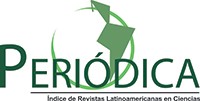DIVERSITY OF TERRESTRIAL ARTHROPODS IN THE LOMAS OF ASIA HILLS, LIMA, PERÚ
DOI:
https://doi.org/10.24039/rtb20211921022Keywords:
Arthropods, Asia Hills, Biodiversity, Vegetation coverAbstract
Asia Lomas are located at km 100 south of the Department of Lima, Cañete Province, Perú, bordering with territories of communities between 200-1200 masl. Being an ecosystem that adquires the fog generated between the months of July and October on an annual basis. The objective of this study was to identify the biodiversity of terrestrial arthropods in the Asia Lomas. The field collections were carried out in October 2017, identifying two study areas. A total of 60 pitfall traps and 60 bait traps were placed, making a direct collection with entomological nets and a floristic register using 1x1m2 plots. A total of 2652 individuals were obtained, of which 1094 fell into pitfall traps, the order Isopoda (525) being the most abundant, followed by the Coleoptera order (249) and the Hymenoptera order (238). In the bait traps stood out the Coleoptera orders (1093), being the most abundant, followed by the Diptera order (358) and the Hymenoptera order (46), with the most representative families as Staphylinidae (1054), Muscidae (88) and Calliphoridae (71). Also, other arthropods of the groups stand out: Araneae, Scorpiones, Myriapoda, Solifugae and Opilion. The biodiversity of arthropods was directly influenced by the flora, especially Asteraceae family, which obtained the highest number of associations. Higher entomological richness was recorded in pitfall traps as opposed to bait traps.
Downloads
References
Alcaraz, F. 2013. El método fitosociológico. Geobotánica. Universidad de Murcia. España. p. 27
Bouchon, D.; Zimmer, M. & Dittmer, J. 2016. Terrestrial Isopod Microbiome: An All-in-One Toolbox for Animal–Microbe Interactions of Ecological Relevance. France Frontiers in Microbiology, 7:1472.
Brack, A. & Mendiola, C. 2010. Ecología del Perú. Tercera edición. Asociación Editorial Bruño. Lima, Perú. p. 496.
Chakravarthy, A.K.; Kammar, V. & Shashank, P.R. 2017. Arthropods: evolution and ecology. Economic and ecological significance of arthropods in diversified ecosystems. Sustaining Regulatory Mechanisms. Springer Science+Business Media Singapore. p. 1-16.
Costa, V.; Grella, M. & Thyssen, P. 2017. Optimized pitfall trap design for collecting terrestrial insects (Arthropoda: Insecta) in biodiversity studies. Neotropical Entomology, 48: 50–56.
Díaz, F.; Pérez, H.; Cabrera, P. & Montoya, P. 2017. Novel insecticides and bait stations for the control of Anastrepha fruit flies in mango orchards. Journal of Pest Science, 90: 865–872.
García, F. 2017. Estudio de la variación temporal y espacial de la calidad del agua de niebla en Las Lomas de Villa María. Tesis de pregrado. Universidad Nacional Agraria La Molina. Perú.
Gedoz, M.; Freitas, E.M.; Da Silva, V.L. & Johann, L. 2021. Edaphic invertebrates as indicators of soil integrity quality. Floresta e Ambiente, 28: 1-10.
Haaf, L. 2013. Method for percent vegetative cover. Partnership for the Delaware Estuary. PDE Method. 49: 1-2.
Hammer, O. 2002. Paleontologycal community and diversity analysis - brief notes.Paläontologisches Institut und Museum, Zürich. pp. 35.
Lleellish, M. 2015a. Guía de Flora de las Lomas de Lima. Ministerio de Agricultura y Riego. MINAGRI.
Lleellish, M. 2015b. Notas sobre Chloraea undulata “Orquidea de Lima” y su registro en las Lomas de Asia, Cañete, Perú. Revista Peruana de Biología, 22: 309-314.
Madrid, F. & Cabanillas, E. 2020. Diversidad Florística de Lomas de Lúcumo, Lima, Perú. Biotempo, 17: 287-299.
Martínez, C. 2005. Introducción a los escarabajos Carabidae (Coleoptera) de Colombia.Instituto de Investigación de Recursos Biológicos Alexander Von Humbolt. Bogotá D.C., Colombia. p. 546.
Menta, C. & Remelli, S. 2020. Soil health and arthropods: from complex system to worthwhile department of chemistry. Insects, 11: 1-21.
Ministerio de Agricultura y Riego (MINAGRI). 2013. Guía de Flora de las lomas costeras de Lima. Dirección General Forestal de Fauna silvestre. Perú. p. 98.
Mostacero, J.; Mejía, F.; Zelada, W. & Medina, C. 2007. Biogeografía del Perú. Asamblea Nacional de Rectores. Perú. p. 374.
El Peruano. 2018. Aprueban incorporación de 36 ecosistemas a la “Lista Sectorial de Ecosistemas Frágiles”. Resolución de Dirección Ejecutiva N° 153-2018-MINAGRI-SERFOR. 2018. Lima, 18 de julio de 2018.
Reyna, I. 2017. Lomas de Asia. Refugio de vida silvestre y trabajos de conservación. Cañete: Biblioteca Nacional del Perú. p. 150.
Rodríguez, L.O. & Young, K.R. 2000. Biological Diversity of Peru: Determining Priority Areas for Conservation. AMBIO: A Journal of the Human Environment, 29: 329-337.
Rundel, P.W.; Dillon M.O.; Palma B.; Mooney H.A.; Gulmon S.L. & Ehleringer J.R. 1991. The phytogeography and ecology of the coastal Atacama and Peruvian deserts. Aliso, 13: 1-49.
Samways, M.; Bartonb, P.; Birkhofer, K.; Chichorro, F.; Deacona, Ch.; Fartmann, T.; Fukushima, S.; Gaigher, R.; Habel, J.; Hallmann, C.; Hill, M.; Hochkirch, A,; Kaila, L.; Kwak, M.; Maes, D.; Mammola, S.; Noriega, J.; Orfinger, A.; Pedraza, F.; Pryke, J.S.; Roque, F.; Settele, J.; Simaika, J.P.; Stork, N.E.; Suhling, F.; Vorster, C. & Cardoso, P. 2020. Solutions for humanity on how to conserve insects. Biological Conservation, 242: 108427.
Sotomayor, D. & Jiménez, P. 2008. Condiciones meteorológicas y dinámica vegetal del ecosistema costero lomas de Atiquipa (Caravelí - Arequipa) en el sur del Perú. Ecología Aplicada, 7: 1-8.
Trinidad, H.; Huamán-Melo, E.; Delgado, A. & Cano, A. 2012. Flora vascular de las Lomas de Villa María y Amancaes, Lima, Perú. Revista Peruana de Biología 19: 149–158.
Thriplehorn, C. & Johnson, N. 2004. Borror and DeLong ́s Introduction to the Study of Insects. Cengage Learning Publishing. 7 Ed. USA. p. 888.
Velasquez, E. 2014. Variación de la composición florística de las Lomas de Tacahuay desde el pleistoceno hasta la actualidad (Tacna-Perú). Tesis de Postgrado. Universidad Nacional La Agraria La Molina. Lima, Perú.
Waller, A. 2015. Ficha zoológica Armadillidium vulgare, Latreille, 1804 (Crustacea: Isopoda). Noticias de la SZU, 8: 35-36.
Published
How to Cite
Issue
Section
License
Copyright (c) 2021 The Biologist

This work is licensed under a Creative Commons Attribution-NonCommercial-NoDerivatives 4.0 International License.
Objeto: El AUTOR-CEDENTE transfiere de manera TOTAL Y SIN LIMITACIÓN alguna al CESIONARIO (Revista The Biologist (Lima)) los derechos patrimoniales que le corresponden sobre sus obras por el tiempo que establezca la ley internacional. En virtud de lo anterior, se entiende que el CESIONARIO adquiere el derecho de reproducción en todas sus modalidades, incluso para inclusión audiovisual; el derecho de transformación o adaptación, comunicación pública, traducción, distribución y, en general, cualquier tipo de explotación que de las obras se pueda realizar por cualquier medio conocido o por conocer en el territorio nacional o internacional.
Remuneración: La cesión de los derechos patrimoniales de autor que mediante este contrato se hace será a título gratuito.
Condiciones y legitimidad de los derechos: El AUTOR-CEDENTE garantiza que es propietario integral de los derechos de explotación de la(s) obra(s) y en consecuencia garantiza que puede contratar y transferir los derechos aquí cedidos sin ningún tipo de limitación por no tener ningún tipo de gravamen, limitación o disposición. En todo caso, responderá por cualquier reclamo que en materia de derecho de autor se pueda presentar, exonerando de cualquier responsabilidad al CESIONARIO.
Licencia de acceso abierto: El AUTOR-CEDENTE autoriza que manuscrito publicado en la Revista Científica The Biologist (Lima) (versión Impresa ISSN 1816-0719, versión en línea ISSN 1994-9073) permanece disponible para su consulta pública en el sitio web http://revistas.unfv.edu.pe/index.php/rtb/index y en los diferentes sistemas de indexación y bases de datos en las que la revista tiene visibilidad, bajo la licencia Creative Commons, en la modalidad Reconocimiento-No comercial- Sin Trabajos derivados –aprobada en Perú, y por lo tanto son de acceso abierto. De ahí que los autores dan, sin derecho a retribución económica, a la Escuela Profesional de Biología, Facultad de Ciencias Naturales y Matemática de la Universidad Nacional Federico Villarreal (EPB - FCCNM - UNFV), los derechos de autor para la edición y reproducción a través de diferentes medios de difusión.









































